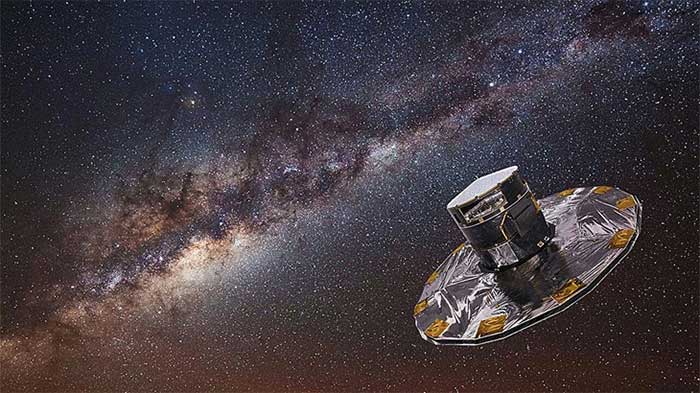A New Method Based on Acoustic Oscillations to Measure Distances Between Stars and Planets Yields Remarkably Accurate Results.
The new method for measuring distances between stars and planets is called “asteroseismology.”
At the École Polytechnique Fédérale de Lausanne (EPFL), Professor Richard Anderson’s research team focuses on analyzing the positions of celestial objects recorded by the GAIA space probe from the European Space Agency (ESA).
For many years, GAIA has provided data on nearly 2 billion stars. Scientists used the parallax method to measure distances, using a nearby star as a reference and determining the angles of triangles with the object to be measured.
However, this method does not yield accurate results for distant stars. The procedure is relatively complex and often leads to systematic errors.
Professor Richard Anderson and his colleagues have tested a new measurement method using asteroseismology. The research team analyzes wave data on the surfaces of stars and planets, compiling them into an oscillation table.
Astronomers analyze the vibrations and oscillations of stars, which are then translated into acoustic waves, creating a frequency spectrum. This method is similar to how geologists use seismic waves from an earthquake to analyze Earth’s structure.
“In our research, we are essentially listening to the sounds of many stars. Some stars are as far away as 15,000 light-years from us,” said Professor Richard Anderson.

GAIA Mission Provides Data on Approximately 2 Billion Stars – (Photo: ESA).
Previously, the technique of asteroseismology was mainly used to study what occurs in the deep layers of stars and planets. However, when applied to calculate distances between celestial objects, it provides results that are much more accurate and effective than before.
Specifically, the research team used asteroseismology to measure the distances of 12,000 oscillating red dwarf stars and obtained optimal data. They also utilized this new technique to recalibrate the traditional parallax method of measuring star distances.
Professor Andrea Miglio from the University of Bologna (Italy), a co-author of the study, explained that the new method involves understanding the speed of sound transmission in space and changes based on temperature and density within the star.
“By analyzing the frequency spectrum of oscillations, we can also estimate the size of a star. It’s similar to how you can determine the size of a musical instrument by the sound it produces, such as the difference between the pitch of a violin and a cello,” Professor Andrea Miglio explained.


















































